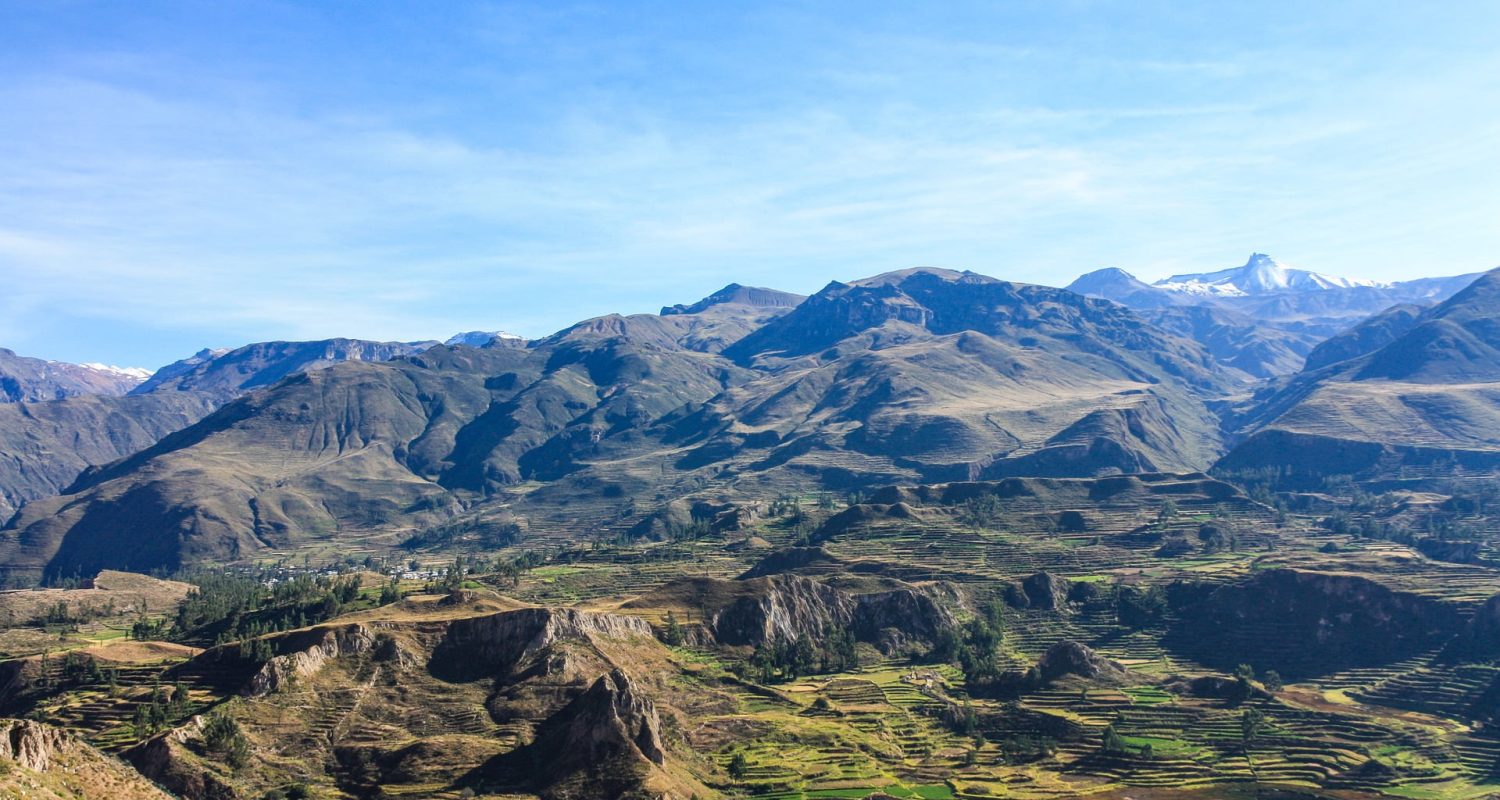Colca Canyon

TABLE OF CONTENTS
- Introduction about Colca Canyon
- Colca Canyon Location
- How to Reach Colca Canyon
- Activities you can do in Colca Canyon
Discover the perfect stay around the Location wtih Booking.com
Colca Canyon, one of the world’s deepest canyons, is a breathtaking natural wonder located in southern Peru. Twice as deep as the Grand Canyon, Colca Canyon offers visitors stunning vistas, dramatic landscapes, and rich cultural experiences. Known for its majestic Andean condors that soar above the canyon and its picturesque terraced agriculture dating back to pre-Inca times, Colca Canyon is a must-visit destination for nature lovers, adventure enthusiasts, and those seeking to explore Peru’s rich history and culture.
Useful information about Colca Canyon:
Location:
Colca Canyon is situated in the Arequipa Region of southern Peru, approximately 160 kilometers (100 miles) northwest of the city of Arequipa. The canyon stretches over 100 kilometers (62 miles) and reaches depths of more than 3,270 meters (10,730 feet), making it one of the deepest canyons in the world. The town of Chivay serves as a gateway to the canyon and is a common starting point for visitors.
How to reach Colca Canyon:
Reaching Colca Canyon typically involves traveling from the city of Arequipa. Visitors can take a bus, private car, or join a guided tour to reach the canyon. The journey to Chivay, the main entry point to Colca Canyon, takes approximately 3 to 4 hours by road. From Chivay, visitors can explore the canyon and surrounding villages, either by vehicle or on foot. Many tours offer multi-day trekking options for those who wish to experience the canyon more intimately.
What to bring:
When visiting Colca Canyon, it’s essential to come prepared for variable weather conditions and high altitudes. Sunscreen, a hat, and sunglasses are crucial for sun protection, while layers of clothing, including a warm jacket, are recommended to accommodate temperature changes throughout the day. Comfortable hiking shoes are essential for exploring the rugged terrain, and a reusable water bottle is advisable to stay hydrated. If planning to trek, a lightweight backpack with snacks, a camera, and binoculars for birdwatching will enhance your experience.
Best time to visit Colca Canyon:
The best time to visit Colca Canyon is during the dry season, which runs from May to October. During these months, the weather is generally clear and sunny, making it ideal for outdoor activities and sightseeing. The months of June to August are particularly popular, but they also coincide with peak tourist season, so expect larger crowds and higher prices. The rainy season, from November to April, brings occasional showers and cooler temperatures but also lush green landscapes and fewer tourists.
Activities you can do in Colca Canyon:
Colca Canyon offers a wide range of activities for visitors to enjoy. Key attractions include the Cruz del Condor viewpoint, where visitors can observe the majestic Andean condors gliding on thermal currents above the canyon. Trekking is a popular activity, with trails that lead to remote villages, hot springs, and stunning viewpoints. The Colca River provides opportunities for rafting, while the surrounding area is perfect for birdwatching, with a variety of native species to spot. Visitors can also explore traditional Andean villages such as Yanque and Cabanaconde, where they can learn about local customs, sample regional cuisine, and visit ancient terraces and archaeological sites.
Colca Canyon is a destination of extraordinary natural beauty and cultural richness, offering visitors an unforgettable experience in one of Peru’s most stunning landscapes. Whether marveling at the soaring condors, hiking through breathtaking scenery, or immersing yourself in the traditions of the Andean people, a visit to Colca Canyon is sure to leave a lasting impression. This remarkable canyon invites travelers to connect with nature, history, and the resilient spirit of the communities that call it home, making it a truly unique and enriching destination.
